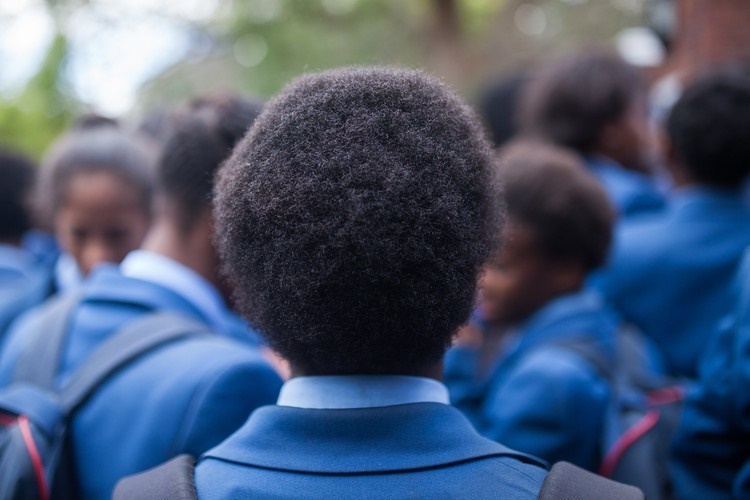
Jessica Wasserman is an Educational Psychologist specialising in Trauma-Sensitive Schools. Here she describes her vision for a return to schools after the Covid-19 lockdown.
The Department of Basic Education (DBE) briefed the portfolio committee on 29 April 2020 on the proposed dates for the resumption of schooling post Covid-19 lockdown.
According to the presentation, Grades 12 and 7 are to return to school on the 6th May, followed by Grades 11 and 6 on 20th May. Grades 10 and 5 then follow on 3rd June, Grades 9 and 4 on the 17th June, and Grades 8 and 3 on 1 July; while Grades 1, 2 and R are to return on 8th and 15th July.
It has also been recommended that schools become points for health workers to conduct screening and testing for Covid-19.I applaud the DBE for recognising the resilience of our youth.
This is not the first time we as South Africans have been exposed to trauma – be it violence, hunger, unemployment or aggravated death. We are a country wrought with intergenerational and unmitigated stress and trauma.
Yet our children have continued to demonstrate their ability to regulate the toxic stress in their bodies and brains, and engage in higher order thinking and reasoning, with some of our top matriculants reigning from our most poverty-stricken communities.
The year is not lost.
If provided with the right environment, sensitive to their needs, our children will learn.
Schools as screening and testing sites
A trauma-sensitive school is a school that acknowledges the importance of community, and a sense of belonging. It is a home away from home. It is a resource centre, a library, a clinic, a safe-haven.
The idea of schools in South Africa opening up their doors as testing and screening sites for Covid-19, creates this sense of community, which begins to shift our school culture to one of greater sensitivity, care and compassion.
- Do you have enough toilet paper to last a coronavirus quarantine? Find out here
- 'As pre-schools must close, do I still need to pay the fees?' Government responds to parents' concerns
- Coronavirus, kids and school closings: A public health expert answers 4 questions
A phased-in approach for resumption of the school year, according to pupils’ grades
As well as being heavily grounded in theory and scientific research, trauma-sensitive practices are also largely practical. There is a strong focus on infrastructure and policy development, particularly with regards to security and safety.
If a learner does not feel physically or psychologically safe, they will be unable to access their higher-order/executive brain functions, such as memory, comprehension, attention, and impulse control.
This will have a direct impact on their ability to learn.
Staggering learners by grade, over a period of months, does not necessarily ensure safety. It does not do enough to ensure protection against Covid-19; and it does not put measures into place that protect learners from fear, anxiety and danger (both real and imagined).
The learners will still be entering the school and their classrooms as before, with little or no change to rules or policy, albeit for the desks slightly more spaced apart and hand sanitisers more readily available.
All will continue as ‘normal’: learners will go out for their interval twice a day, they will change subjects/teachers/classes each time the bell rings, they will go home, and repeat the next day.
A month or so later, the next cohort of learners will join them.
This will only serve to heighten the risk of spreading the virus, leaving the educators to manage the fear, uncertainty and most likely, the challenging behaviour, of the new intake of learners as they re-adjust to school life.
This lack of order, structure and predictability, coupled with the ongoing bullying and vicitimization that takes place on the school playground, will almost certainly make learning and cognitive development a very difficult task indeed.
- Lockdown diaries: What I’ve learnt as a parent with my daughter away
- Creative parenting in a crisis: Necessity is the mother of all invention
- Lessons from the autistic community: Supporting children through the coronavirus pandemic
So what is an alternative option?
Containment. What our learners need is to enter the schoolgrounds and feel a sense of calm and control. They need to be met in the doorway to their classroom by a regulated and prepared educator.
Clear and concise instructions are to be given, and these same instructions are to be used by all school personnel, including admin and support staff, in order to create an environment of predictability and safety for the learners.Once the learners enter their classroom, this is where they stay.
This is their home away from home. This is where they connect, share, learn, eat and play.
This is their ‘new normal’.
And this is what their educator has prepared for. Learners will feel a sense of belonging and family in their classroom.
They will learn critical life skills and follow sanitation protocol. They will be given body breaks, they will stretch, breathe, and do yoga. They will be given an opportunity to rest, to read, to regulate.
In so doing, the learners are not only physically contained, helping to curb the spread of the virus and better control hygiene and sanitation; but they are also emotionally and psychologically contained.
This containment can be achieved without stretching the re-integration of school children back into the system over a period of months.
If planned properly, all learners can return at the same time. The staggering can be done over the course of the day i.e. each phase begins and ends at a certain time.
For example:
Grades R-3 begin at 7h30am and end at 12h30pm
Grades 4-7 begin at 8h30 and end at 14h30
Grades 8-12 begin at 09h30 and end at 16h30
The latter may be a worthwhile option to consider, based on research that clearly points to the adolescent brain needing more sleep, only ‘waking up’ later in the day. Understandably there will be logistical issues, but these will have to be teethed out as the schools find their rhythm.
What is fundamental in all of this, is that the classroom becomes a place of safety and containment. Once containment, calm and control have been achieved, curriculum can then be effectively and creatively delivered.
This will not only be an adjustment for the learners, but for the educators as well. It is critical that thorough preparation, training and support is provided to the teachers during this time of re-structuring and re-creation of the classroom space.
Is this not what the DBE and respective unions should be planning for?
Surely we need to get our schools i.e educators, principals, support staff, district officials sensitized to the ‘new normal’?
Surely they need time to revise policies and safety plans, to re-design and re-imagine their classroom space, to ensure that all Covid-19 safety measures are in place, and that they have received the training and support required to implement a post-Covid-19 back to school safety plan.
It is my hope that DBE will take these recommendations into account in the final iteration of their post Covid-19 back to school plan.
Find online learning resources here.
Chat back:
Share your story with Parent24. Anonymous contributions are welcome.
Email: Share your story with us via email at chatback @ parent24.com




 Publications
Publications
 Partners
Partners











